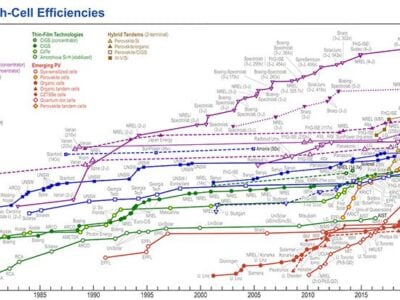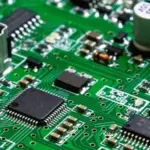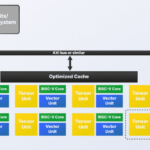
Guide details IoT protocols and standards
Electronics design consultancy, ByteSnap has compiled a guide on IoT protocols and standards ahead of World IoT Day on April 9th.
The Internet of Things (IoT) covers fresh use cases such as smart water management, smart farming, micromobility, self-driving enablement and connected vehicles. With the proliferation of IoT devices, protocols and standards ensure that the devices function correctly and communicate smoothly with each other.
IoT protocols define how devices should work, communicate and exchange data within an IoT network. They define device connectivity, interoperability, security, and privacy within IoT systems. In the context of the IoT the protocols take into account the unique requirements of IoT devices, including limited processing power, memory and energy. IoT protocols are designed to provide reliable and efficient comms between devices, minimise bandwidth use and keep power consumption low.
IoT standards, meanwhile, define the requirements for IoT devices and systems. They can cover a wide range of topics, such as security, interoperability, and data formats. IoT standards are constructed and maintained by organisations and bodies that specialise in setting technical guidelines, frameworks and best practices for IoT. Prominent organisations include the International Electrotechnical Commission (IEC); Institute of Electrical and Electronics Engineers (IEEE); Industrial Internet Consortium (IIC); Open Connectivity Foundation (OCF); Thread Group; Connectivity Standards Alliance.
IoT standards
Among key international standards celebrated on World IoT Day on April 9th are ISO/IEC 30141:2018; ISO/IEC 27030:2020 and ISO/IEC 21823-3:2021.
Bluetooth and Wi-Fi are examples of commercial IoT standards and protocols that are widely used. The commercial IoT industry is still growing, with more protocols and standards emerging to meet the demand for streamlined, user-friendly devices in the consumer electronics market.
Common IoT communication protocols include WiFi, Bluetooth, Zigbee, LoRaWAN, and MQTT; while common IoT security standards include Secure Sockets Layer (SSL), Matter and Transport Layer Security (TLS).
The type of device deployed plays a significant role in determining the suitable IoT protocol. For small, low-power devices like sensors or wearables, a lightweight protocol such as MQTT (Message Queuing Telemetry Transport) may be preferable as it is efficient at transmitting small packets of data over constrained networks.
For complex devices, including industrial equipment or smart appliances, that require robust communication capabilities, protocols like CoAP (Constrained Application Protocol) or HTTP might be better, offering features like request-response communication and support for larger payloads.
Data transfer rates vary depending on the application’s needs. Projects involving real-time monitoring or control, such as smart home automation or industrial process optimisation, protocols like MQTT or CoAP are suited, because they enable low-latency communication and efficient data transmission. Applications that involve periodic data collection or infrequent updates, such as environmental monitoring or asset tracking, may see benefits using LoRaWAN or Sigfox, which prioritise long-range communication and low power consumption over high data rates.
Power consumption is a critical consideration, particularly for battery-powered IoT devices where energy efficiency directly impacts device lifespan and maintenance costs. Lightweight protocols like MQTT and CoAP are designed to minimise power consumption by reducing the overhead associated with message formatting and transmission. Conversely, Bluetooth Low Energy (BLE) and Zigbee implement power-saving mechanisms like low-duty cycling and sleep modes to prolong battery life in devices such as wearables and smart sensors.
The range over which IoT devices need to communicate varies depending on the deployment environment and application scenario. For projects that require local area coverage within a confined space, protocols like BLE or Zigbee offer short-range communication suitable for home automation, smart buildings, and indoor asset tracking. Alternatively, for applications spanning larger geographical areas or outdoor environments, protocols like LoRaWAN or NB-IoT (Narrowband IoT) provide long-range connectivity capable of reaching distances of several kilometres, making them ideal for applications such as agriculture monitoring, smart city infrastructure, and remote environmental sensing.
IoT security standards
Standards such as the Matter standard include several security features such as encryption, authentication, and device identity. This helps to ensure that data transmitted between devices is secure and private, reducing the risk of data breaches and cyberattacks.
Zigbee or Bluetooth Mesh are designed to handle large-scale deployments of IoT devices, allowing them to communicate with each other efficiently and effectively.
By adhering to a common standard, manufacturers can reduce the need for custom development and testing, reducing costs and time-to-market for new products. A common framework for communication between devices, designers and manufacturers can focus on developing new and innovative products and services, rather than developing custom communication protocols.
The success of an IoT project hinges not only on its core concept but also on various supporting factors like hardware, software, and infrastructure. Thus, taking a holistic approach to designing an IoT system becomes paramount, considering every aspect that contributes to its launch and use.
These standards serve as a universal language for IoT devices, facilitating seamless communication between them. Adherence to these standards ensures compliance with regulatory requirements and industry norms, reduces costs and improves efficiency, all pivotal steps in bringing IoT products to fruition.
The full guide is at https://www.bytesnap.com/news-blog/iot-product-design-standards-protocols/
 If you enjoyed this article, you will like the following ones: don't miss them by subscribing to :
eeNews on Google News
If you enjoyed this article, you will like the following ones: don't miss them by subscribing to :
eeNews on Google News





